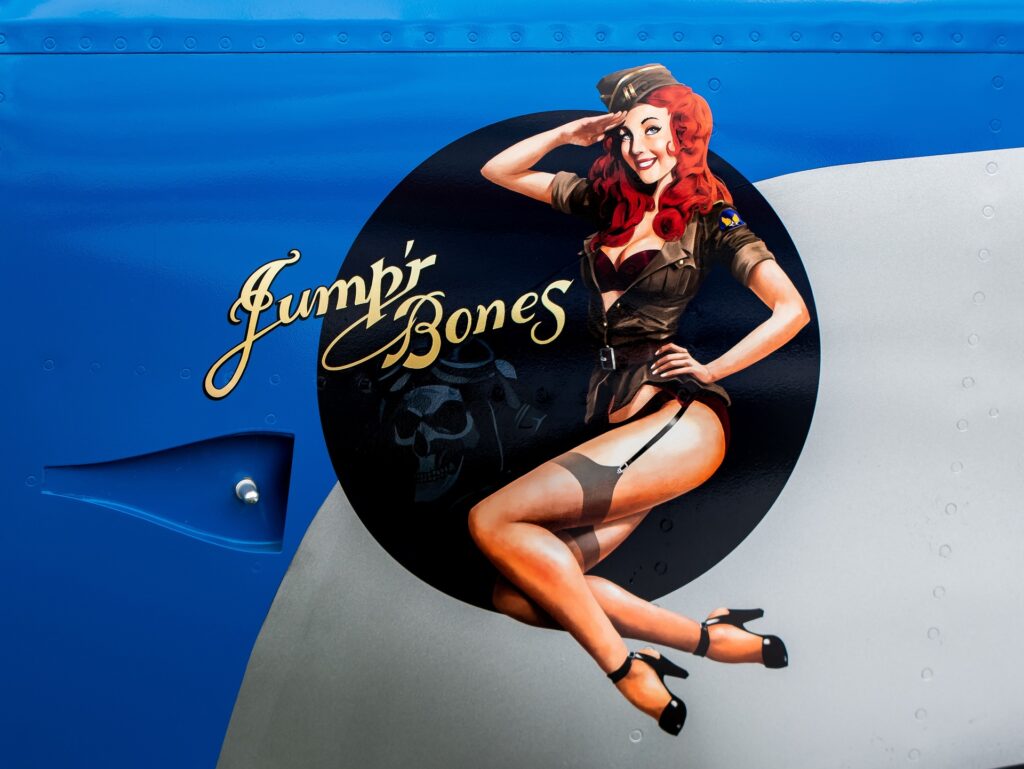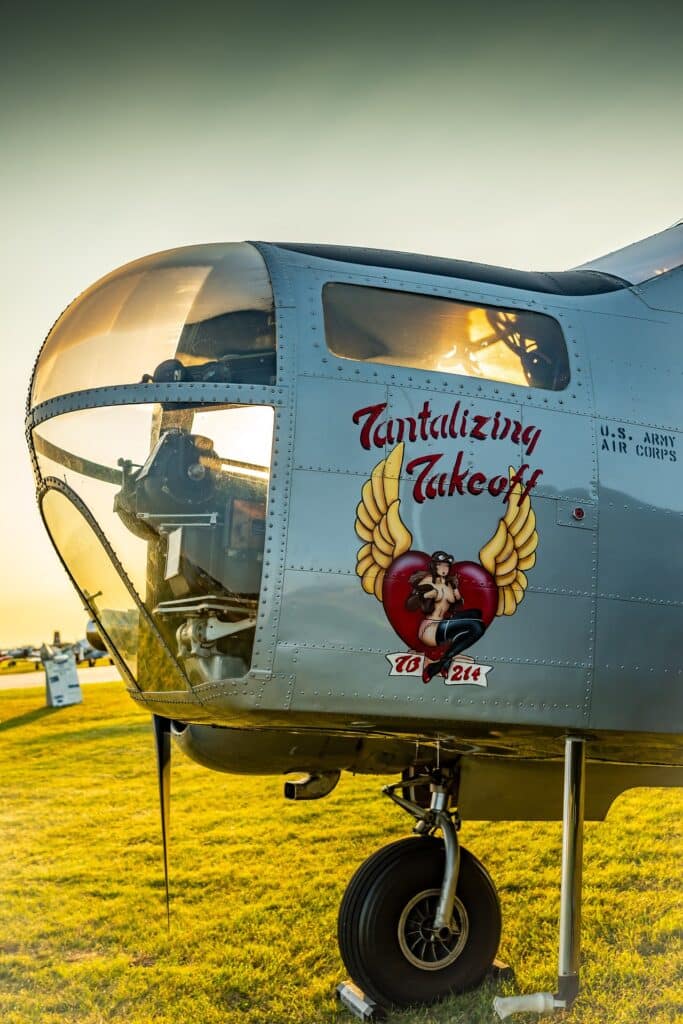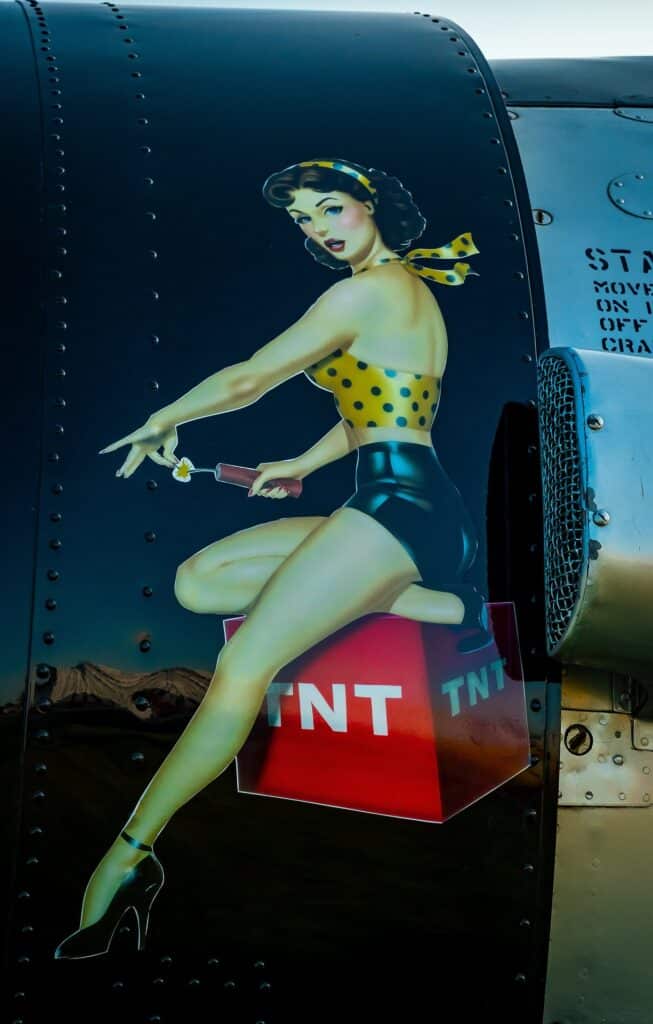Embark with me on a fascinating journey into the skies, where the canvas isn’t just the vast blue expanse but the metal fuselage of warplanes adorned with intricate artwork known as nose art. As we explore the world of aviation history, we’ll unveil the stories behind these captivating illustrations and their profound impact on the morale of flight and ground crews during wartime.
The Birth of Nose Art: A Unique Aviation Tradition

The tradition of adorning aircraft with nose art can be traced back to World War I, but it truly flourished during World War II. Initially, pilots would personalize their planes with individual markings or symbols, often representing their unit or squadron. However, as the war progressed, these decorations evolved into elaborate paintings, pin-ups, and humorous characters.
One fascinating origin of nose art lies in the names given to the planes, many of which were the names of the sweethearts of the crews. These aircraft became more than just machines; they became a symbol of connection between the crew and their loved ones back home. The nose art was a way for the men who flew these planes to carry a piece of their personal lives into the skies, fostering a sense of camaraderie and shared purpose among the crew members.
Bonding with the Machine: The Role of Nose Art
Nose art served a dual purpose during wartime. Firstly, it became a way for the flight crews to bond with their airplanes. The practice of naming planes and adorning them with unique art created a personal connection, as if the aircraft had its own identity. This connection was not merely sentimental; it had practical implications. Pilots believed that a well-maintained and cherished aircraft would bring them luck and ensure a safe return from their missions.

Secondly, nose art became a morale-boosting tool for both flight and ground crews. In the challenging and often grim atmosphere of war, these vibrant and sometimes cheeky illustrations injected a sense of humor and humanity. They served as a reminder of the individuals behind the machines, fostering a sense of pride and camaraderie among those who kept the aircraft operational.
The Artistic Language of Warplanes: A Reflection of Culture


Nose art varied widely in style and content, reflecting the cultural and artistic influences of the time. Pin-up girls, cartoon characters, patriotic symbols, and squadron insignias were popular choices. The artists responsible for creating these masterpieces ranged from professional illustrators to talented crew members. The art not only added a touch of beauty to the formidable warplanes but also showcased the creativity and resilience of those in service.
Modern Pin-Up Photography: A Nostalgic Homage to Warplane Appeal

In the present day, the allure of warplane nose art continues to captivate us, transcending the confines of military history. Modern pin-up photography, with its roots in the glamour of the mid-20th century, pays homage to the spirit of those iconic warplanes.
The appeal lies in the juxtaposition of strength and sensuality, reminiscent of the pin-up girls adorning the aircraft of yesteryear. Modern pin-up photographers skillfully capture the essence of that era, celebrating the confidence and allure of their subjects. The connection between the past and the present is undeniable, as these images evoke the same spirit of empowerment and resilience that defined the wartime era.
As we appreciate the modern renditions of pin-up photography, let us remember the original purpose of nose art on warplanes – to bring a touch of humanity and connection into the often harsh world of conflict. Today, it serves as a nostalgic nod to the past, reminding us of the bravery, camaraderie, and the enduring appeal of those wartime flying machines.
